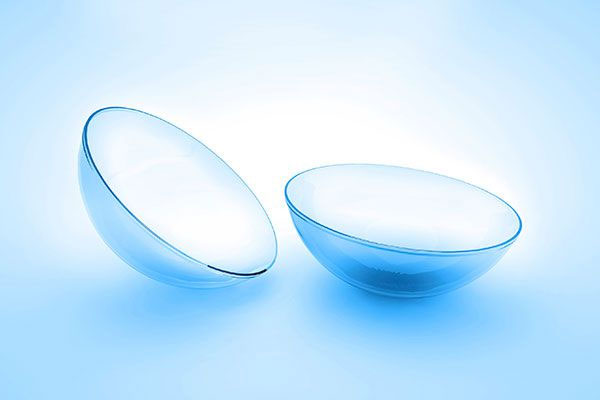Wearing orthokeratology lenses at night is a non-surgical method for treating refractive errors that is becoming increasingly popular today. Nighttime contact lenses can adjust the curvature of the corneal surface of the eye, reducing myopia levels, and helping those with myopia achieve good vision for all normal daytime activities.
1. What are Nighttime Contact Lenses?
To correct refractive errors, various methods are employed, such as wearing eyeglasses, using contact lenses, and undergoing surgery. Wearing eyeglasses is a common method but has many limitations, such as being inconvenient for sports and fogging up in the rain. With the Lasik surgery method, patients can only undergo the procedure when they are at least 18 years old. Therefore, individuals with myopia who are not old enough for surgery or find traditional eyeglasses cumbersome can opt for an alternative treatment method: wearing nighttime contact lenses.
Nighttime contact lenses (ortho-k lenses) have a diameter of less than 12mm and sit on the corneal surface, which is the black part of the eye. The lenses are placed in the eyes just before going to sleep at night and removed upon waking in the morning, serving as a substitute for daytime eyewear.
Regarding the therapeutic mechanism, nighttime contact lenses are custom-designed for each eye to adjust daytime vision for those with refractive errors, thanks to the natural elasticity of the cornea. Individuals with refractive errors who wear nighttime contact lenses, combined with the pressure exerted by the eyelids during sleep, gradually create a gentle mold that changes the curvature of the cornea over time during the day.

Myopic individuals who do not want to wear eyeglasses can switch to nighttime contact lenses.
2. Advantages and Disadvantages of Wearing Nighttime Contact Lenses for Refractive Errors
2.1 Advantages
- Controls the progression of myopia specifically and refractive errors in general.
- Individuals with refractive errors are no longer dependent on eyeglasses or daytime contact lenses while still seeing clearly. This helps patients avoid limitations during sports activities and enhances aesthetics.
- Many patients have been able to stop wearing glasses after using nighttime contact lenses.
- Can be applied to all ages, especially for children with rapidly progressing refractive errors.
- Since the adjustment effect on refractive errors is temporary, users can stop wearing the lenses whenever they want without worrying about lasting side effects.
2.2 Disadvantages
- Nighttime contact lenses can only treat myopia and astigmatism, and do not address hyperopia.
- Individuals with allergic predispositions or surface corneal conditions like dry eyes are advised against using this treatment method.
- People who work late or have trouble sleeping should not use these lenses, as vision improvement may not be significant if they had insufficient sleep or experienced insomnia the night before.
3. Precautions When Using Nighttime Contact Lenses
- When patients decide to use nighttime contact lenses, they must undergo a comprehensive examination of parameters such as refractive error and corneal thickness.
- Adhere to proper maintenance and storage to prevent bacterial and fungal contamination of the lenses.
- Before handling the lenses, wash hands with soap, dry them thoroughly, and use specialized lens cleaning solutions to avoid infecting the eyes.
- Improperly removing or inserting the lenses can cause swelling, discomfort, or blurred vision. If these symptoms occur, patients should stop using the lenses and consult an eye specialist.
- Users of nighttime contact lenses should get enough sleep, at least 6 to 8 hours per night, to ensure good vision the next day.
- Replace lenses according to the prescribed schedule and do not wear them beyond their intended usage period.
- Regular follow-ups: Patients should have check-ups one week, one month, three months, and six months after first wearing the lenses.
Wearing nighttime contact lenses is an effective method for correcting refractive errors. When choosing this treatment method, patients must strictly follow their doctor’s instructions and have regular check-ups to ensure the best treatment outcomes and avoid complications.


















































